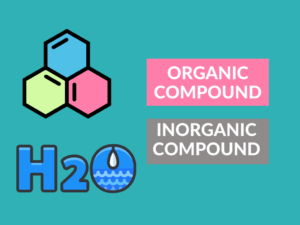What is a molecular compound?
A molecular compound is a chemical compound that is formed by the sharing of electrons between atoms. In this type of compound, the atoms are held together by covalent bonds. These compounds are usually composed of nonmetals or metalloids. The resulting molecules have specific ratios of atoms, and their properties are determined by the types and arrangements of these atoms.
Examples of molecular compounds:
– Water (H2O): This compound consists of two hydrogen atoms and one oxygen atom.
– Carbon dioxide (CO2): It is composed of one carbon atom and two oxygen atoms.
– Methane (CH4): It contains one carbon atom bonded to four hydrogen atoms.
Uses of molecular compounds:
– Many molecular compounds are essential for biological processes. For example, water is crucial for various physiological functions.
– Some molecular compounds, like ethanol, are used as solvents or as raw materials in the production of medicines, fuels, and plastics.
– Carbon dioxide is widely used in fire extinguishers and as a coolant in refrigeration systems.
What is an ionic compound?
An ionic compound is a chemical compound formed by the electrostatic attraction between positively and negatively charged ions. This type of compound is composed of metal cations and nonmetal anions. Ionic compounds have high melting and boiling points and often form crystal structures.
Examples of ionic compounds:
– Sodium chloride (NaCl): This compound consists of sodium cations (Na+) and chloride anions (Cl-).
– Calcium carbonate (CaCO3): It is composed of calcium cations (Ca2+) and carbonate anions (CO32-).
– Magnesium oxide (MgO): It contains magnesium cations (Mg2+) and oxide anions (O2-).
Uses of ionic compounds:
– Many ionic compounds, such as sodium chloride, are used as table salt in food.
– Calcium carbonate is utilized in the production of cement, glass, and ceramics.
– Ionic compounds like potassium nitrate are used as fertilizers in agriculture.
Differences Between Molecular Compounds and Ionic Compounds:
| Difference Area | Molecular Compound | Ionic Compound |
|---|---|---|
| Bonding | Formed by covalent bonds | Formed by electrostatic attraction |
| Composition | Composed of two or more nonmetals | Composed of metal cations and nonmetal anions |
| Melting and Boiling Points | Lower melting and boiling points | Higher melting and boiling points |
| State at Room Temperature | Molecular compounds can be gases, liquids, or solids | Ionic compounds are usually solids |
| Dissociation | Do not dissociate in water | Dissociate into ions in water |
| Electrical Conductivity | Do not conduct electricity in pure form | Conduct electricity when dissolved in water or molten |
| Solubility | Varies depending on the compound | Many ionic compounds are soluble in water |
| Crystalline Structure | Molecular compounds do not typically form crystal structures | Ionic compounds often form crystal structures |
| Examples | Water (H2O), Methane (CH4) | Sodium chloride (NaCl), Calcium carbonate (CaCO3) |
| Uses | Used as solvents, raw materials, etc. | Used as table salt, in cement production, etc. |
Conclusion:
In summary, molecular compounds are formed by covalent bonding between nonmetals, have lower melting points, and do not dissociate in water. On the other hand, ionic compounds are formed by the electrostatic attraction between metal cations and nonmetal anions, have higher melting points, and readily dissociate into ions in water.
Knowledge Check:
1. What type of bonding occurs in molecular compounds?
Answer: Covalent bonding.
2. Provide an example of an ionic compound.
Answer: Sodium chloride (NaCl).
3. Do ionic compounds conduct electricity in their pure form?
Answer: No, they do not.
4. Which type of compound typically forms crystal structures?
Answer: Ionic compounds.
5. What are the composition elements of a molecular compound?
Answer: Two or more nonmetals.
6. Are molecular compounds soluble in water?
Answer: It varies depending on the compound.
7. Name a molecular compound commonly used as a solvent.
Answer: Ethanol.
8. Do molecular compounds dissociate into ions in water?
Answer: No, they do not.
9. What type of compound is typically a solid at room temperature?
Answer: Ionic compounds.
10. What is the state of most ionic compounds at room temperature?
Answer: Solid.
Related Topics:
– Covalent Bonding vs. Ionic Bonding: Understanding the Different Types of Chemical Bonds.
– Solubility Rules for Ionic Compounds: What Determines Solubility in Water?
– Properties of Water: The Unique Nature of the Most Important Molecular Compound.


